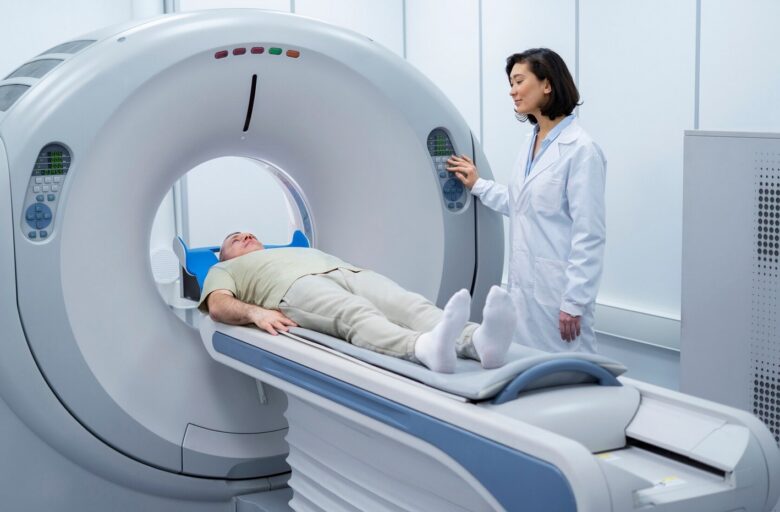The discomfort of muscle pain and stiffness can be a formidable obstacle in our daily lives. Whether it’s from a strenuous workout, improper posture, or a health condition, this kind of discomfort can be both pervasive and deeply unsettling. But there are ways to manage and alleviate these symptoms, granting you relief and the freedom to move without any boundaries. This comprehensive guide offers effective strategies to target the root of the problem and restore your body’s natural flexibility and strength.
Contents
- Understanding the Causes of Muscle Pain and Stiffness
- Immediate Relief Techniques for Acute Pain
- Long-Term Strategies to Prevent and Manage Muscle Discomfort
- Advanced Pain Relief Methods
- Lifestyle Changes and Methods to Manage Stress
- Incorporating Technology and Apps for Pain Management
- Seeking Guidance from Healthcare Professionals
- Conclusion
Understanding the Causes of Muscle Pain and Stiffness
Understanding the factors that lead to muscle pain and stiffness is the first step in finding relief. Common causes include:
- Exercise and Physical Activities: High-intensity exercise, new workout routines, or overexertion can lead to delayed onset muscle soreness (DOMS), which causes localized pain and stiffness, often peaking 24 to 72 hours after exercise.
- Poor Posture: Improper positioning during prolonged periods, whether standing, sitting, or lying down, can strain muscles and lead to discomfort over time.
- Injury and Trauma: Direct impact or repetitive motion injuries can cause muscles to tense up in response to protect the body.
- Health Conditions: Certain conditions like fibromyalgia, chronic fatigue syndrome, and chronic myofascial pain can cause persistent muscle pain and stiffness.

Source: freepik.com
Immediate Relief Techniques for Acute Pain
When muscle pain is acute, seeking immediate relief is essential. Here are some techniques to try:
- Rest: If possible, stop the activity causing the pain and take a break. Resting your muscles allows them to recover and prevents further strain.
- Ice and Heat Therapy: Applying ice to the affected area can reduce inflammation and numb the pain. After a day or two, heat can help relax stiff muscles and increase blood flow for faster healing.
- Stretching: Gentle stretching helps to relieve tension and soreness. Focus on the tight muscles and hold each stretch for 30 seconds.
- Massage: Massaging the sore muscles can increase blood flow and help them relax. Use slow, circular motions with light pressure.
Long-Term Strategies to Prevent and Manage Muscle Discomfort
Prevention is the best medicine, and by incorporating these long-term strategies, you can reduce the frequency and severity of muscle pain and stiffness:
- Regular Exercise: Engaging in regular physical activity that includes strength training and flexibility exercises can improve muscle tone and reduce the risk of injury.
- Proper Body Mechanics: Lift heavy objects with your legs, not your back. When sitting, keep your feet flat on the floor, and ensure your workstation is ergonomically designed to promote good posture.
- Hydration and Nutrition: Drink plenty of water to keep muscles hydrated. A diet rich in nutrients like magnesium and potassium can help prevent muscle cramps and stiffness.
- Supplements: Consider taking supplements like omega-3 fatty acids, which have anti-inflammatory properties, or turmeric, which may aid in pain management.

Source: freepik.com
Advanced Pain Relief Methods
For those with chronic or debilitating muscle pain, advanced methods offer relief that goes beyond traditional remedies:
- Physical Therapy: A licensed physical therapist can develop a personalized regimen to help manage pain and improve flexibility and mobility.
- Chiropractic Care: Spinal adjustments and other manual therapies performed by a chiropractor can alleviate muscle tension and reduce pain.
- Acupuncture: This ancient Chinese practice involves inserting thin needles into the skin at specific points to relieve pain and promote healing.
- Prescribed Medication: In some cases, doctors may prescribe medication to manage muscle pain, such as nonsteroidal anti-inflammatory drugs (NSAIDs) or muscle relaxants.
Lifestyle Changes and Methods to Manage Stress
Stress, both physical and emotional, can exacerbate muscle pain and stiffness. Making lifestyle changes and adopting stress management techniques can help:
- Mind-Body Practices: Techniques like yoga, Pilates, and tai chi combine physical posture, breathing exercises, and meditation, which can all contribute to reduced stress and muscle tension.
- Healthy Sleep Habits: Quality sleep is essential for muscle recovery. Establish a consistent sleep schedule and create a relaxing bedtime routine.
- Managing Emotional Stress: Techniques like cognitive-behavioral therapy (CBT), mindfulness, and biofeedback can help manage the emotional components of pain.
- Work-Life Balance: Ensure that you are not overworking yourself and that you schedule time for relaxation and activities you enjoy.

Source: freepik.com
Incorporating Technology and Apps for Pain Management
In the modern world, technology and apps offer innovative ways to manage muscle pain:
- Wearable Devices: Devices like TENS units and compression sleeves can provide on-the-go relief and aid in reducing muscle tension.
- Pain Management Apps: There are numerous apps that offer guided pain management techniques, meditation, and tracking functionality to monitor your progress.
- Telehealth and Online Physical Therapy: Remote sessions with healthcare professionals can provide personalized guidance and exercises, tailored to your specific needs.
Seeking Guidance from Healthcare Professionals
If you’re struggling with chronic or severe muscle pain, it’s important to seek guidance from healthcare professionals. They can perform a thorough assessment and provide a treatment plan that may include:
- Referrals to Specialists: You may be referred to a pain management specialist, rheumatologist, orthopedic doctor, or other specialists based on the nature of your pain.
- Diagnostic Tests and Imaging: Tests like blood work, X-rays, MRIs, or CT scans may be necessary to diagnose the underlying cause of your pain and stiffness.
- Injections and Procedures: In some cases, healthcare professionals may recommend injections such as corticosteroids or trigger point injections to manage pain, or procedures such as radiofrequency ablation for longer-term relief.

Source: freepik.com
Conclusion
When it comes to managing muscle pain and stiffness, the key lies in a multifaceted approach. By understanding the causes, seeking immediate relief, preventing future occurrences, and leveraging long-term and advanced strategies, you can effectively manage your discomfort. Remember that each body is different, and what works for one person may not work for another. It’s crucial to listen to your body and tailor these approaches to your individual needs. With patience and persistence, you can reclaim a life free from the burden of muscle pain.
